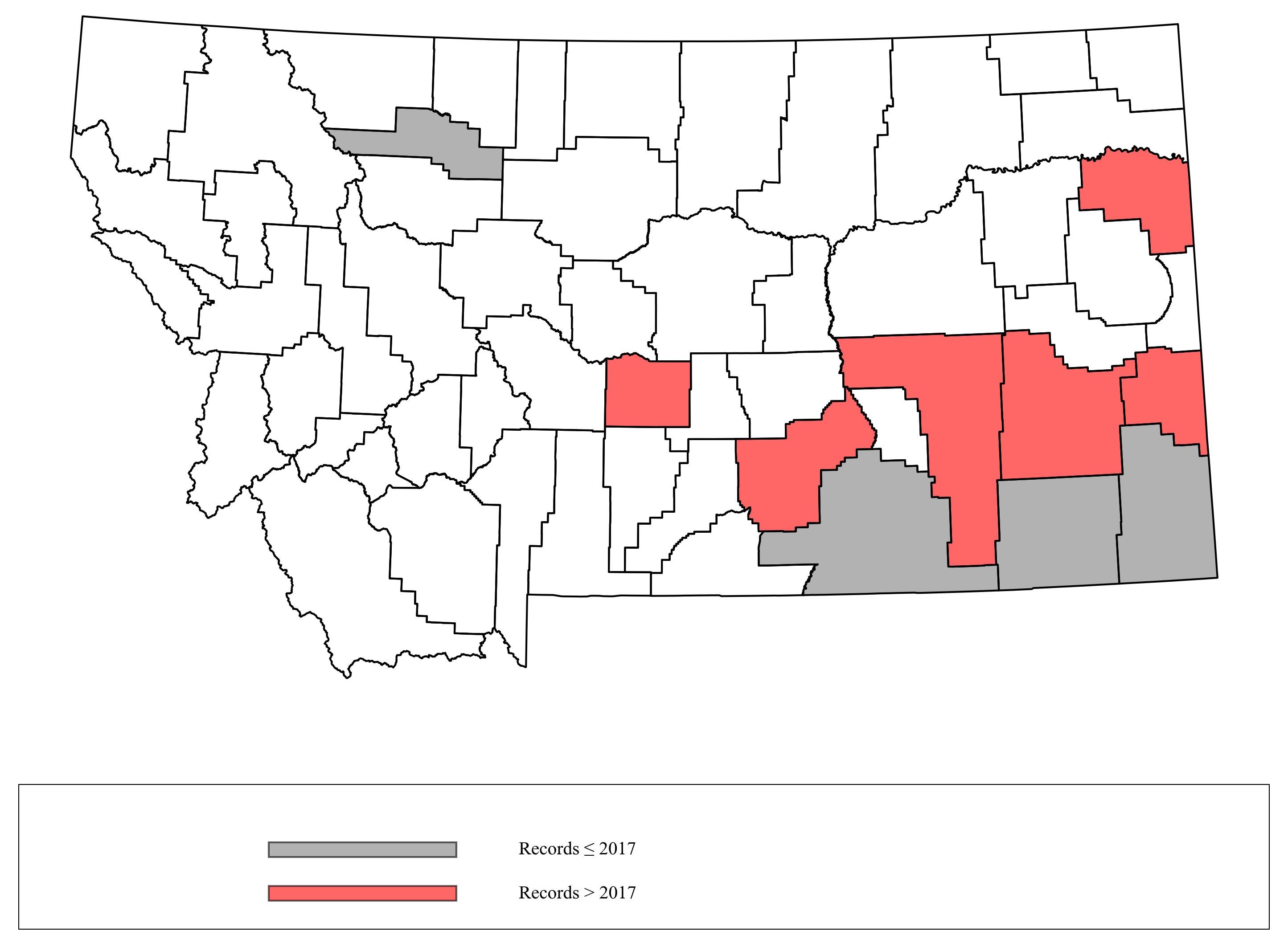Bumble Bees of Montana
Bombus (Thoracobombus) pensylvanicus (DeGeer, 1773) American Bumble Bee
Bombus pensylvanicus was once one of the most widespread bumble bees in North America, ranging from the eastern U.S. through the Great Plains, with the subspecies B. pensylvanicus sonorous known from the deserts of the Southwest to Oregon (Williams et al. 2014). However, the IUCN now recommends this bee for “Vulnerable” status as recent studies have documented declines in both range and abundance, especially in the northernmost parts of its range (Hatfield et al. 2015c). Bombus pensylvanicus has rarely been collected in Montana. As of 2016, only five specimens were known from four counties.
Montana Distribution: Records from Dolan et al. (2017) (gray) with correctionsand additional records added after publication (red).

Diagnosis
Bombus pensylvanicus has a cheek that is longer than it is wide. The hairs on the face and on the top of the head are black. The surface of the clypeus has many pits and punctures. Abdominal T2 and T3 (and often T1) have yellow hairs while T4-T6 are black. The black hair between the wings forms a strong band, though often the hairs of the thorax behind the wings are also all black so that the only yellow on the thorax are in front of the wings.
Similar Species
This species is similar to, and easily confused with, B. fervidus, B. nevadensis, B. auricomus, B. appositus, and B. borealis. However, B. fervidus has T1-T4 yellow. Bombus auricomus and B. nevadensis both have a very smooth clypeus. Bombus appositus and B. borealis both have yellow hair predominating on the face and on T1-T4.
